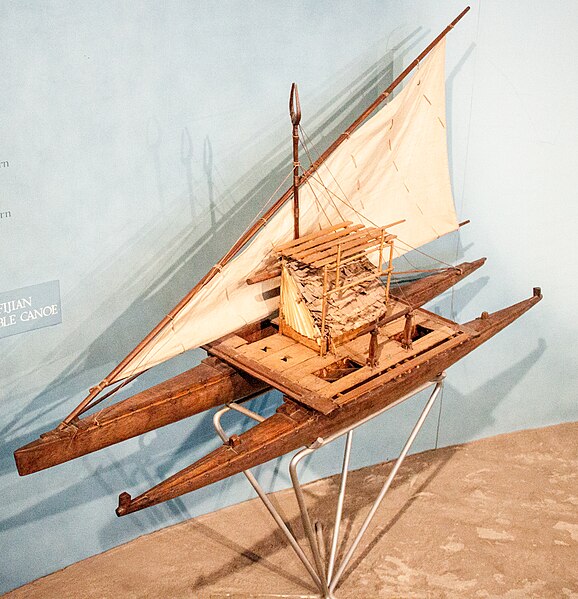The Challenger Deep is the deepest known point of the seabed of Earth, located in the western Pacific Ocean at the southern end of the Mariana Trench, in the ocean territory of the Federated States of Micronesia. According to the GEBCO Gazetteer of Undersea Feature Names the depression's depth is 10,920 ± 10 m (35,827 ± 33 ft) at 11°22.4′N 142°35.5′E,
although its exact geodetic location remains inconclusive and its depth has been measured at 10,902–10,929 m (35,768–35,856 ft) by deep-diving submersibles, remotely operated underwater vehicles, benthic landers, and sonar bathymetry. The differences in depth estimates and their geodetic positions are scientifically explainable by the difficulty of researching such deep locations.
Chief Scientist Tom Gaskell, left, aboard HMS Challenger II, 1951
Research vessel Vityaz in Kaliningrad "Museum of world ocean"
The RV Hakuhō Maru
RV Yokosuka was used as the support ship for ROV Kaikō.
The Pacific Ocean is the largest and deepest of Earth's five oceanic divisions. It extends from the Arctic Ocean in the north to the Southern Ocean in the south, and is bounded by the continents of Asia and Australia in the west and the Americas in the east.
The Pacific Ocean, photograph taken from space by the GOES-18 spacecraft in September 2023
Model of a Fijian drua, an example of an Austronesian vessel with a double-canoe (catamaran) hull and a crab claw sail
The bathyscaphe Trieste before her record dive to the bottom of the Mariana Trench, 23 January 1960
Abel Aubert du Petit-Thouars taking over Tahiti on 9 September 1842








